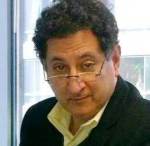Updated
Business Brief: Morocco Maintains Strong Investment Grade Rating Despite Weaknesses; AMU Central Banks Agree on Common Strategy; and Morocco Continues Development Programs in the South – Jean R. AbiNader
Jean R. AbiNader
November 21, 2018

Jean R. AbiNader, Moroccan American Center
Fitch Ratings continues to rate Morocco as BBB – due to its macroeconomic stability, comfortable external buffers, and a low ratio of share of foreign currency in public debt, despite weak development and governance indicators, high government debt, and current account deficits in excess of other countries in this category.
Fitch expects the budget deficit to widen slightly to 3.8% of GDP due to the government subsidies on wheat and sugar with the effects of hydrocarbon price increases. Grants from the GCC are behind schedule and government tax receipts will also not make government forecasts. ”Fitch forecasts the general government (GG) deficit, which also includes social security, local governments and extra-budgetary units, to widen to 2.5% of GDP in 2018 from a government estimate of 2.2% in 2017.”
The 2019 budget prioritizes social policies, measures to support consumer purchasing power, grow employment, and reduce regional disparities. While there have been significant investments in infrastructure and manufacturing capacities, job growth remains low affecting employment figures and social indicators – major factors behind social unrest. According to Fitch, “The government is seeking to accommodate social priorities while containing pressures on the budget deficit by closing tax loopholes and raising some direct and indirect tax rates.”
In the midterm, Fitch believes that “debt has been on an upward trajectory since it reached its low point of 45.4% of GDP in 2008, reflecting moderate growth and slow and intermittent progress on fiscal consolidation… Refinancing risks are low as debt is mostly dirham-denominated, while 76.7% of external public debt is owed to official creditors.” In the public sector, improvements are coming to reduce the debt load of state-owned enterprises, currently 26% of GDP of which almost 17% is owed to external creditors. “The government is currently working on a draft law to streamline the governance and oversight of SOEs and strengthen their balance sheets.”
In line with assessments by the World Bank Group and CESE, “The medium-term outlook for non-agricultural activity remains constrained by structural impediments, including weak education outcomes, skill mismatches and low participation rates. The government is intensifying efforts to reduce the long payment delays in the economy, which are a key constraint for private sector activity.”
AMU central bankers agree on new tools for regional banking. Despite the larger regional standoff between Morocco and Algeria, which has led King Mohammed VI to decry the death of the AMU, business must go on! The governors of the central banks in the five member countries met and agreed to actions “Based on four priorities on the use of new financial technologies and cryptocurrency, financial inclusion, participatory finance, fight against money laundering, and the financing of terrorism.”
Speaking at the summary press conference, Abdellatif Jouahri, the chief of Morocco’s Central Bank,
“Stressed that the internal situation of the countries of the region, as well as developments at the external level, require the adoption of this ‘historic position’, which will mark the beginning of a new stage of work between these financial institutions.
Among the decisions taken was to set up a single secretariat in Tunis meeting twice a year to coordinate collective actions and save time and “avoid the risk of widening the gap between the Maghreb and the developed countries.” This will enable AMU members to exchange experiences in a timely fashion, set priorities in the key areas of concern, and narrow the knowledge gap with the international financial community. This collaborative approach will also be applied to areas such as inclusive finance, participatory finance, controlling terrorism financing, and money laundering.
This is the first time the board of central bank governors has met in 10 years, and the chiefs of the banks made clear that coordination among them is critical to building a complementary economic partnership with the AMU.
There have been several conferences focusing on the economic development in Morocco’s southern provinces, an area that encompasses the Western Sahara. Attracting companies primarily from Europe and Asia, the business forum approach, hosted in Laayoune, the region’s largest city and capital, is turning skeptics into investors.
Morocco’s leaders believe that attracting private investors and companies to the area will support the country’s claim that it is proactive in building up the economic life of the region and creating opportunities for local inhabitants. Rokia Derham, the secretary of state for foreign trade says that the south is a very rich region. “There is great potential in industry, fishing, agriculture or the relocation of services. We want to see foreign investors coming.”
Developing the South through public-private partnerships and investment promotion is intended to draw new investors and serve as a model of regional development, in line with Morocco’s decentralization efforts.
Among the attractions are growing opportunities in the services, easy access to sub-Saharan Africa, expansion of ports and infrastructure in Laayoune and Dakhla, as well as renewable energy, fishing, tourism, and many construction needs. Morocco plans to spend more than $5.2 billion on the region’s development by 2021.